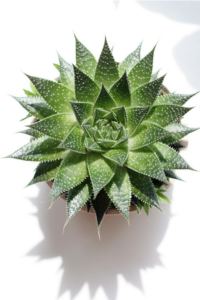Thyme is a fragrant and versatile herb and is a wonderful addition to any kitchen garden. It is known for its culinary as well as medicinal properties. Today we will show you how to grow thyme plant in your garden, without any harmful chemicals or adulteration. We will also see that discovering how to grow thyme plant is not just about gardening and hobbies; it’s a journey towards sustainable living too.
Selecting the Right Thyme Variety

There are many thyme varieties available and you have to choose the appropriate one for your use case as well as proper cultivation. Common thyme (Thymus vulgaris), as the name suggests is the most common variety available. It is also the most widely preferred variety for culinary purposes. Another variety, which is lemon thyme (Thymus citriodorus) adds a citrusy/tangy flavor to dishes. French thyme and creeping thyme on the other hand are other popular choices. Based on your preference you might select any of these varieties.
Planting Thyme Seeds or Seedlings

Seeds
Seed Selection: Only buy high-quality thyme seeds from reputable suppliers. Bad ones, might end up making you disappointed as well as taking up your time.
Germination: Start indoors 6-8 weeks before the last frost. This will allow the seedlings to develop some resilience for facing the outside climate. Sow seeds in a well-draining seed starting mix.
Light and Temperature: Thyme seeds require light and warmth for germination. Therefore, maintain a temperature between 60-70°F (15-21°C).
Transplanting: Once seedlings have germinated and have two sets of true leaves you can transplant them into individual containers.
Seedlings
Purchase Healthy Seedlings: If you plan to not germinate the seed and directly start from seed seems daunting( you are lazy ), buy healthy thyme seedlings from a nursery.
Transplanting: Now choose a sunny location with well-draining soil and transplant seedlings 6-12 inches apart, so that they get adequate space of their own.
Soil Preparation: Thyme prefers slightly alkaline soil with good drainage so make sure you about that. You can add homemade compost from organic waste for optimal results.
Ideal Growing Conditions

Sunlight: Thyme requires full sunlight for proper growth. Therefore it is important to ensure that your plant receives at least 6-8 hours of direct sunlight daily.
Watering: When it comes to watering, water thyme moderately this will allow the soil to dry out between watering sessions. Excess watering, a.k.a overwatering can lead to rotting of roots — bad.
Pruning: It is also important to regularly prune thyme to encourage bushier growth. You can pinch off the tips to promote branching.
Mulching: Bonus tip: You can apply a layer of organic mulch around the plant to retain moisture and suppress weed infestation.
Common Pests and Diseases
Pests: Those nasty pests get everywhere. Nothing in life is granted without some entity poking its nose in your hard work, sometimes it’s the people, and sometimes it’s the pests( some people can be pests too). Keep an eye out for aphids and spider mites as they love thyme as much as you and I do. Use organic neem oil as a natural remedy.
Diseases: It is not that common for thyme to develop diseases, at least when cultivated properly. It is generally resistant to diseases. Just avoid overwatering as it might lead to fungal issues.
Harvesting Thyme

Now when it’s time to reap your benefits, follow these careful instructions.
Timing: Harvest thyme when the plant reaches 6-8 inches in height as it is probably fully grown at this point and can be safely cut and chopped.
Method: You can use regular scissors to snip individual stems or to cut larger portions.
Frequency: Harvest regularly to promote growth, but avoid removing more than one-third of the plant at a time as it might stunt its growth.
Culinary and Medicinal Uses

Thyme adds a special flavor to many dishes and is a spice of choice in soups, stews, and roasted meats. Beyond that, it also possesses medicinal properties, including anti-inflammatory and antibacterial qualities. You can use thyme in teas or use it as a key ingredient in homemade brews with other herbs like dandelion and rosemary for respiratory issues.
Thyme and Sustainability
Growing and using thyme in your kitchen not only aligns with your health but also supports sustainability. Here’s how :
Reduced Food Miles: Growing thyme at home reduces reliance on store-bought herbs thus cutting down on transportation-related carbon emissions. You become self-reliant too.
Organic Cultivation: If you are our reader, then by no means you are growing herbs using chemicals are you? By avoiding synthetic pesticides and fertilizers, you contribute to healthier ecosystems water conservation, and most importantly your own health.
Biodiversity: Cultivating thyme attracts pollinators such as bees and other nature agents. This fosters biodiversity in your garden.
Conclusion
So, now you know how to grow thyme plant at home. Growing thyme is a rewarding experience that not only enhances your kitchen experience but also promotes sustainability. Let us know your experience and share your learning with everyone. We would love to know your feedback!





